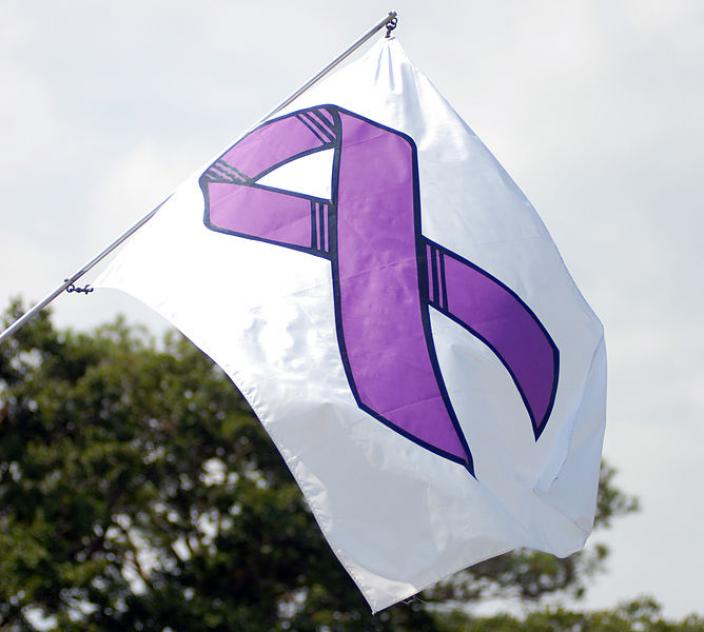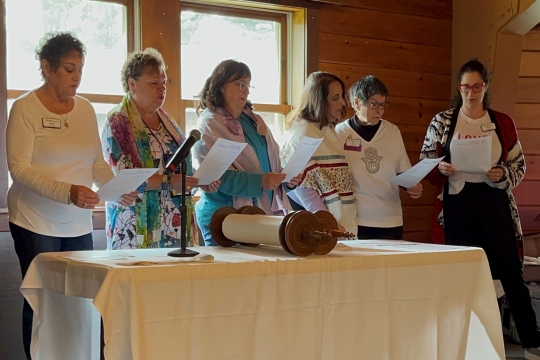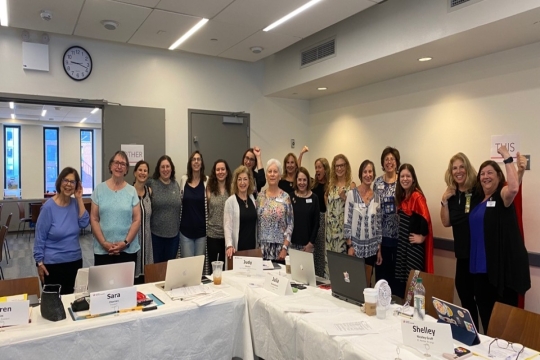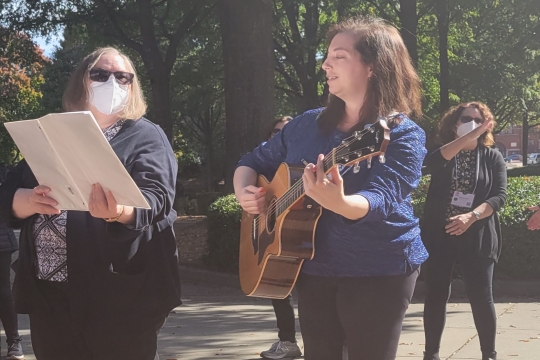
As we observe Yom Kippur 5778, we stand together, pray and fast as a Jewish community plagued by fear and doubt. The year 5777 presented us with images many believed were part of our tragic past; certainly not our present nor our future.
We witnessed our HUC-JIR female rabbinical students and the Women of the Wall being physically and emotionally violated at the Kotel in Jerusalem, the holiest venue in the "city of peace." At our Central District Kallah at Goldman Union Camp-Institute (GUCI) last year we were inspired and energized by our key note speaker Lesley Sachs, Director of Women of the Wall. By Lesley sharing her story, she created a face to face bond between Central District Sisters and liberal Jewish women in Israel. These, too, are our sisters.
Last month in Charlottesville, we saw Jews trying to celebrate Shabbat in their temple while leering Nazis watched from across the street. They were contemplating burning that synagogue to the ground while the worshippers were inside. These images belong to Poland 1939. Why are they OUR reality seventy-eight years later? As Women of Reform Judaism what are we to do? Do we do an extra 'al chet' for the sin of Nazism still present in the world?
To me, the answer may be found in our Mahzor, our High Holyday prayer book, The Torah reading from Deuteronomy on Yom Kippur morning mirrors our actions at that very moment: "You stand here today, all of you, in the presence of Adonai, your G-d... every man and woman and child of Israel...". We are not alone. Our sisters and our JIR brothers stand with us as we both seek atonement from G-d and contemplate and attempt to chart our futures. The genius of Judaism is the minyan; the quorum necessary for worship. We are compelled to pray in a group because the group helps us strengthen each other. We stand together in our congregations as we first did so long ago at Sinai. Proudly we proclaim: "Shema Yisrael Adonai Eloheinu, Adonai Echad!" "Listen Israel, Adonai is our G-d, Adonai is One!" This can be a most empowering moment for us. Why so? Later in the portion it is written: "See, I place before you today both life and goodness, death and evil...choose life that you and your children may live..."
How do we choose life? This command is almost maddeningly abstract. I believe an answer may be found in our Yom Kippur Haftarah from the prophet Isaiah. Isaiah looks at the fasting in his day, which he sees in a modern context as grandstanding. Then he provides a path for us to follow: "Is not this the fast I desire - to break the bonds of injustice...to let the oppressed go free?... Is it not to share your bread with the hungry and to take the homeless poor into your home, and never to neglect your own flesh and blood." Isaiah teaches if our fasts are effective, through the pain and emptiness of hunger, we learn the message of empathy.
May our fasts inspire us to reach out to those who need us so much: whether they are the unwanted and dispossessed in our country or our sisters and brothers in Israel, fighting for the religious freedom which should be their birthright. Let us join together as WRJ and through our actions, inspired by words from Torah "...choose life so we and our children may live!"
Sheilah Abramson-Miles is President of WRJ Central District and a member of the North American Board of WRJ. She is a member of Temple Shalom, Louisville, KY.
Related Posts

Parashat Yom Rishon shel Rosh HaShanah

Cultivating a Culture of Accountability and Belonging

